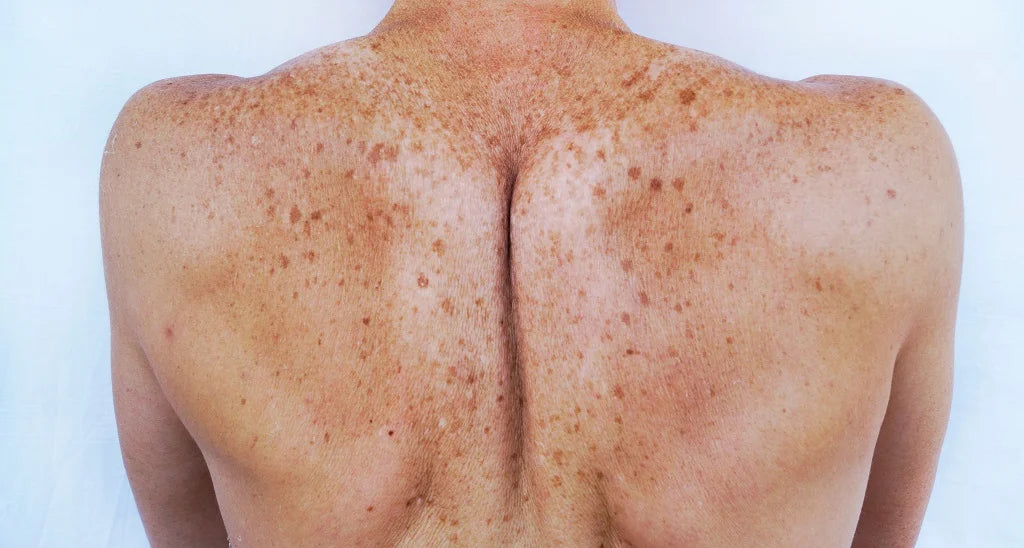
What Is Post -Inflammatory Hyperpigmentation?

Dr. Deepthi Prasad, MBBS.
Written by Our Editorial Team
Table of Contents
Listen to the blog
Nothing can replace the joy of reading, right? Read the blog here.
Post-inflammatory hyperpigmentation, or PIH, also known as Post Inflammatory melanosis, is an acquired skin condition due to external injury or inflammation. In this condition, dark patches and pigmentation are visible on the skin due to excess melanin production. Suppose you struggle with skin conditions like acne, eczema, minor cuts or burns, psoriasis, skin infection, or allergic reaction. In that case, you are more prone to PIH, as these skin conditions often trigger post-inflammatory hyperpigmentation. Let's elucidate on post-inflammatory hyperpigmentation and discuss effective ways to treat PIH.
What Is Post-Inflammatory Hyperpigmentation?
Post Inflammatory Hyperpigmentation refers to the darkening of the skin that happens in response to inflammation or skin irritation. When the skin experiences trauma, it produces excess melanin production, which results in dark patches or skin pigmentation on the affected area. Exposure to UV rays can worsen your skin condition, leading to the appearance of pigmentation on the face. A PIH can affect the epidermis, the outer layer of the skin, or the dermis, the deeper layer of the skin.
Your skin reacts to the injury or inflammation by producing more melanin, which shows as tan, dark brown, brown, and blue-gray patches on the affected area. Acne, eczema, psoriasis, and impetigo are some common causes of post-inflammatory hyperpigmentation, which result in the manifestation of dark spots and melasma dark patches on the face. Apart from these, radiation therapy, laser therapy, and chemical peels are also linked to the appearance of hyperpigmentation.
Also Read : Is It Possible To Fade Dark Patches On Your Body?
How To Treat Post-Inflammatory Hyperpigmentation?
Healing of PIH can be accelerated by identifying and treating the source of inflammation. Epidermal PIH can be treated without much difficulty. However, dermal PIH needs more intrusive skin treatment methods. Here are some post-inflammatory hyperpigmentation treatment options you can consider if you want to restore your flawless skin.
1. Topical Therapy
If you are looking for an effective non-invasive hyperpigmentation treatment, consider ThriveCo Dark Patches Corrector. Say goodbye to dark patches and spots with this depigmentation cream, as it is the ultimate solution for body hyperpigmentation and melasma pigmentation. Our advanced triple-action formula targets Melasma, Acanthosis Nigricans, and other skin pigmentation issues, delivering unparalleled results. The power and the goodness of Retinal and Tranexamic Acid ester reach the deeper layers of the skin, stimulating collagen production and accelerating cell turnover. As Niacinamide evens your skin tone, its triple-action formula prevents UV-induced melanocyte production. Reveal your true radiance as it helps to fade dark spots. Choose ThriveCo Dark Patches Corrector for a brighter, more flawless skin.
Also Read : What Are Acanthosis Nigricans?
Buy ThriveCo Dark Patches Corrector
Review Shared By Achyutha
"I have recently purchased this product and started using it consistently. Able to see some color change in the neck. Its fragrance is also good. I am completely confident on the results."
2. Chemical Therapy
Another effective solution for epidermal PIH is chemical peels, which remove the outermost or epidermal layer of skin. Chemical peels should be used with care and must be performed only by professionals, or else they can damage your skin, aggravating the skin condition. Salicylic acid and glycolic acid are the commonly used chemical peels that exfoliate the epidermal layer containing excess melanin.
Also Read : Salicylic Acid: A Few Things You Should Know!
3. Laser Therapy
For treating deep-rooted post-inflammatory hyperpigmentation, laser therapy uses focused beams of light to target the affected area, breaking down excess melanin. Laser therapy should be done with care, or else it can flare up hyperpigmentation.
4. Microdermabrasion
This is a non-invasive procedure in which a device is used to gently remove the outer layer of the skin, revealing fresh skin underneath. Microdermabrasion helps to fade dark spots, improving the appearance of the skin.
5. Micro Needling
In this process, a hand-held device with many tiny needles is used to create minute ruptures on your skin, stimulating collagen production for healing skin. As the skin heals, the pigmentation of the face starts fading gradually.
Fading of dark spots and patches due to hyperpigmentation is a time-consuming process. But topical creams and other in-office PIH treatments can accelerate healing. Take control of your skin and rediscover confidence with proper PIH healing techniques. In your journey to an even skin tone, consider incorporating ThriveCo Dark Patches Corrector into your daily skincare routine. This powerful solution, along with expert advice, will help you fade dark spots on your body.
About Doctor :

Dr. Deepthi Prasad specializes in Dermatology, Cosmetology, and Aesthetic Dermatology and has been practicing for over 15 years. After completing MBBS from Dr. NTR University of Health Sciences Andhra Pradesh in 2009, she earned a MD in Dermatology, Venereology & Leprosy from Osmania Medical College in Hyderabad in 2014.
Disclaimer: All the content published on www.thriveco.in is solely for information purposes. It is not a substitute for professional medical advice, diagnosis, or treatment. Always consider seeking the advice of your physician or a qualified healthcare provider. The information, suggestion, or remedies mentioned on this site are provided without warranty of any kind, whether express or implied.
 PAYDAY SALE:EXTRA 15% OFF. Coupon PAYDAY
PAYDAY SALE:EXTRA 15% OFF. Coupon PAYDAY 






